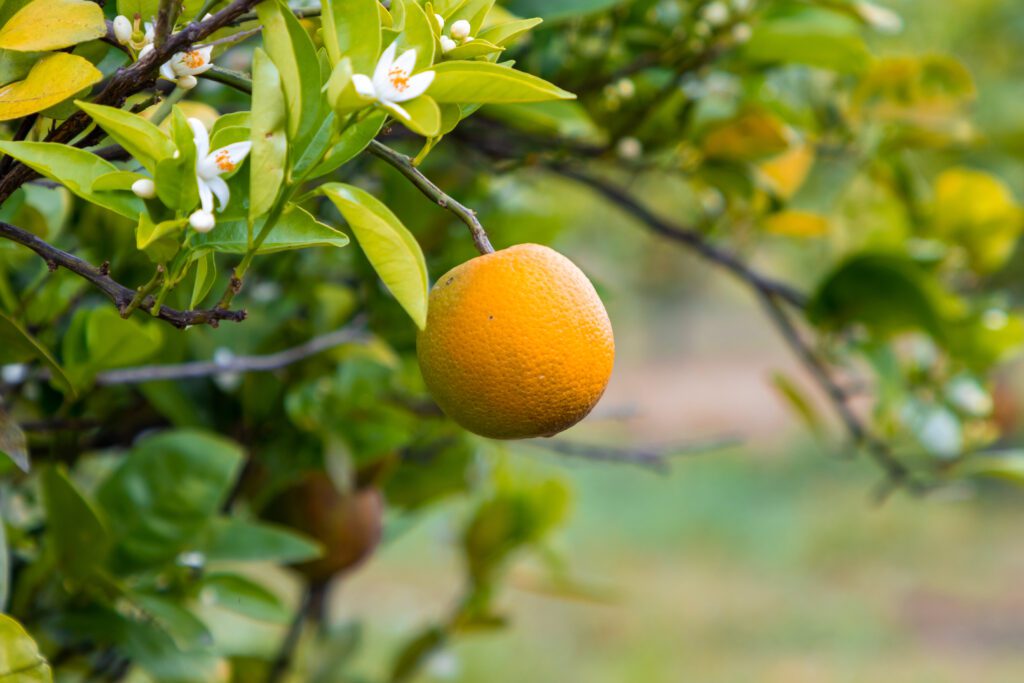by TERESA SCHIFFER
Sponsored by Farm Credit of Central Florida
Nothing says “Florida” quite like sunshine and citrus! The citrus industry has taken quite a beating in the past 15 years thanks to greening. Yet, despite the challenges, citrus still remains a vibrant force in the Florida economy, employing almost 76,000 people and generating $9 billion in economic activity each year. Thanks to advances being made by researchers at UF/IFAS to combat greening, many growers remain committed to the state’s quintessential crop and optimistic about the future.
Citrus Production Down in Recent Years
Citrus has been a major crop in Florida for close to 150 years. There have been plenty of ups and downs as growers learned how to adapt to the annual threat of hurricanes, unexpected freezes, and diseases like citrus canker and greening. Despite these hills and valleys, citrus has been an economic cornerstone of the state.
Florida has been the top citrus producer in the United States for most of the industry’s history. Even globally, Florida is surpassed only by Brazil when it comes to oranges for juice production. However, California took the lead in the 2021-22 season, with 62 percent of the nation’s citrus coming from the west coast state, and 36 percent from Florida.
Florida’s total citrus production last season was 45.1 million boxes, down 22 percent from the previous season’s total of 57.9 million boxes. The value of that harvest was $438 million, 29 percent lower than the $613 million revised value for the year.
Oranges account for 91 percent of the Sunshine State’s total citrus production, with the vast majority of those being destined for the juice market. Grapefruit makes up seven percent of the remaining production, with tangerines and tangelos representing just two percent.
Valencia oranges, prized for their high juice content, accounted for 22.8 million boxes in the 2021-22 season, down 25 percent from the previous year, while non-Valencia oranges dropped 20 percent for a total of 18.3 million boxes. Grapefruit production decreased by 19 percent to 3.33 million boxes, and tangerines and tangelos dropped by 16 percent with 750,000 boxes produced.
While the volume of citrus produced has declined, the prices have risen. In the 2021-22 season, oranges returned $16.55 per box for fresh fruit and $8.19 for processing, up from $15.47 per box for fresh in 2020-21, while the processing rate declined from $9.78 for that year. Grapefruit rose from $23.37 for fresh and $6.85 for processing in 2020-21 to $25.55 per box for fresh and $8.78 for processing in 2021-22, and tangerines and tangelos rose from $27.85 to $40.25 per box for fresh during that time, while processing dropped from $1.50 to $1.
Where Citrus Is Concentrated in Florida
Citrus thrives in Florida thanks to the sandy soil and subtropical climate here. Most citrus is grown in the peninsula, where winter weather is consistently warmer than in the panhandle.
Seventy percent of Florida’s citrus is grown in just five counties. Polk County is the leader, with 7.78 million boxes produced in 2021-22, followed by DeSoto County with 6.8 million boxes, Highlands County with 6.65 million boxes, Hendry County with 5.52 million boxes, and Hardee with 4.75 million boxes.

